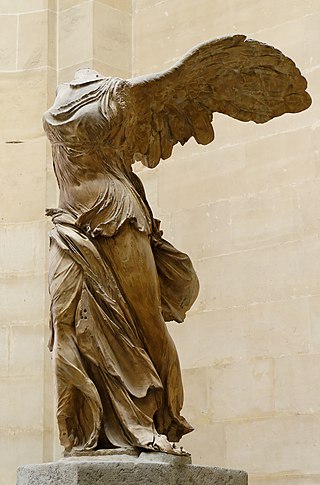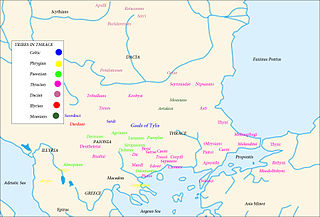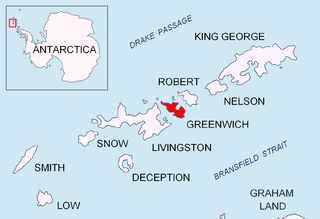Comontorius was a Celtic king in Thrace who in 278 BC founded the kingdom of Tylis, imposing a tribute on the city of Byzantium. His successor on the throne was Cavarus under whom Tylis was destroyed by the Thracians in 212 BC. [1]
Comontorius was a Celtic king in Thrace who in 278 BC founded the kingdom of Tylis, imposing a tribute on the city of Byzantium. His successor on the throne was Cavarus under whom Tylis was destroyed by the Thracians in 212 BC. [1]

The Bronze Age is a historic period, lasting approximately from 3300 BC to 1200 BC, characterized by the use of bronze, the presence of writing in some areas, and other early features of urban civilization. The Bronze Age is the second principal period of the three-age system proposed in 1836 by Christian Jürgensen Thomsen for classifying and studying ancient societies and history. It is also considered the second phase, of three, in the Metal Ages.
Common Era (CE) and Before the Common Era (BCE) are year notations for the Gregorian calendar, the world's most widely used calendar era. Common Era and Before the Common Era are alternatives to the original Anno Domini (AD) and Before Christ (BC) notations used for the same calendar era. The two notation systems are numerically equivalent: "2023 CE" and "AD 2023" each describe the current year; "400 BCE" and "400 BC" are the same year.

Galatia was an ancient area in the highlands of central Anatolia, roughly corresponding to the provinces of Ankara and Eskişehir, in modern Turkey. Galatia was named after the Gauls from Thrace, who settled here and became a small transient foreign tribe in the 3rd century BC, following the Gallic invasion of the Balkans in 279 BC. It has been called the "Gallia" of the East.
Year 212 BC was a year of the pre-Julian Roman calendar. At the time it was known as the Year of the Consulship of Flaccus and Pulcher. The denomination 212 BC for this year has been used since the early medieval period, when the Anno Domini calendar era became the prevalent method in Europe for naming years.

Year 279 BC was a year of the pre-Julian Roman calendar. At the time it was known as the Year of the Consulship of Publius Sulpicius Saverrio and Publius Decius Mus. The denomination 279 BC for this year has been used since the early medieval period, when the Anno Domini calendar era became the prevalent method in Europe for many years.

The Kingdom of Pergamon, Pergamene Kingdom, or Attalid kingdom was a Greek state during the Hellenistic period that ruled much of the Western part of Asia Minor from its capital city of Pergamon. It was ruled by the Attalid dynasty.

In classical antiquity, the Hellenistic period covers the time in Mediterranean history after Classical Greece, between the death of Alexander the Great in 323 BC to the death of Cleopatra VII followed by the emergence of the Roman Empire, as signified by the Battle of Actium in 31 BC and the conquest of Ptolemaic Egypt the following year. The Ancient Greek word Hellas was gradually recognized as the name for Greece, from which the word Hellenistic was derived. "Hellenistic" is distinguished from "Hellenic" in that the latter refers to Greece itself, while the former encompasses all ancient territories under Greek influence, in particular the East after the conquests of Alexander the Great.

Tylis or Tyle was a capital of a short-lived Balkan state mentioned by Polybius that was founded by Celts led by Comontorius in the 3rd century BC. Following their invasion of Thrace and Greece in 279 BC, the Gauls were defeated by the Macedonian king Antigonus II Gonatas in the Battle of Lysimachia in 277 BC, after which they turned inland to Thrace and founded their kingdom at Tylis. It was located near the eastern edge of the Haemus (Balkan) Mountains in what is now eastern Bulgaria. Some bands of Celts, namely the Tectosages, Tolistobogii and Trocmi, did not settle in Thrace, but crossed into Asia Minor to become known as the Galatians. The last king of Tylis was Cavarus who maintained good relations with the city of Byzantium. His capital was destroyed by the Thracians in 212 BC and this was also the end of his kingdom. The modern Bulgarian village of Tulovo in Stara Zagora Province now occupies the site.

Tebulosmta is the highest mountain of the Eastern Caucasus and the highest mountain of the Chechen Republic at an elevation of 4,493 meters above sea level. The mountain is located on the border of Georgia and Chechnya to the east of Mount Kazbek. The glaciers of the mountain are not large.

Tile Ridge is a partly ice-free ridge of elevation 240 m in Dryanovo Heights, Greenwich Island in the South Shetland Islands, Antarctica.

Kabile, Cabyle is a village in southeastern Bulgaria, part of the Tundzha municipality, Yambol Province.
Brennus was one of the Gaulish leaders of the army of the Gallic invasion of the Balkans. While invading the Greek mainland he managed to momentarily reach as far south as Delphi in an attempt to loot the rich treasury of the sanctuary of Apollo. His army suffered a devastating defeat at Delphi; he was heavily injured during the battle and committed suicide there. His militarily inexperienced army was forced to a continuous retreat by the tactical attacks of the Greek city-states and was cut down to a remaining band that fled from Greece.

Tully is a commune in the Somme department in Hauts-de-France in northern France.

The history of Thracian warfare spans from the 10th century BC up to the 1st century AD in the region defined by Ancient Greek and Latin historians as Thrace. It concerns the armed conflicts of the Thracian tribes and their kingdoms in the Balkans. Apart from conflicts between Thracians and neighboring nations and tribes, numerous wars were recorded among Thracian tribes.

Cavarus was a Celtic king in Thrace and the last king of Tylis. Under Cavarus, Tylis was destroyed by the Thracians in 212 BC.
The Aigosages were a Celtic tribe dwelling on both sides of the Hellespont, first in Thrace and then in Troas and Mysia on the Asian side.
Ciroadas was a king of the Odrysian kingdom of Thrace who may have reigned in the years 212 to 200 BC. According to an anonymous poem in the Greek Anthology, he was defeated by king Philip V of Macedon, who dedicated his booty to the goddess Hecate. This may have happened in the year 205 or 200 BC, as the most probable dates, or in another year of Philip's reign. Ciroadas, who gains the epithet the Bold from the poet, is depicted as an important king of the Odrysians. He may have been the victor in the war against Cavarus, in 212 BC, and the destroyer of the Celtic kingdom of Tylis. According to the dedication, he had several sons, but nothing more is known of his family.
Acta Botanica Islandica was a scientific journal of botany published by the Icelandic Institute of Natural History in, and about, Iceland. It was established in 1972. The 15th and last issue was published in 2011. It was primarily an English language publication, but French and German language papers have been published.